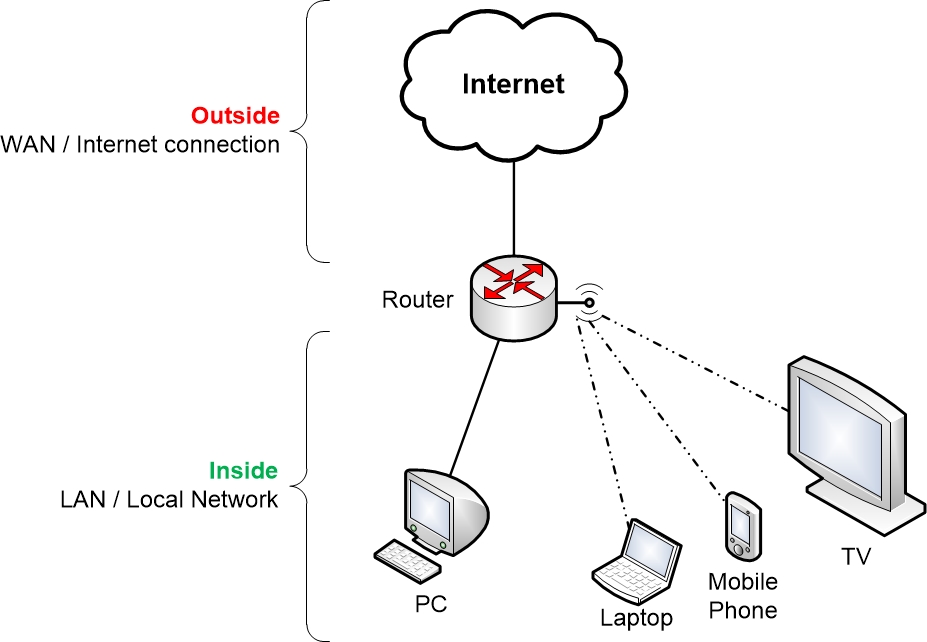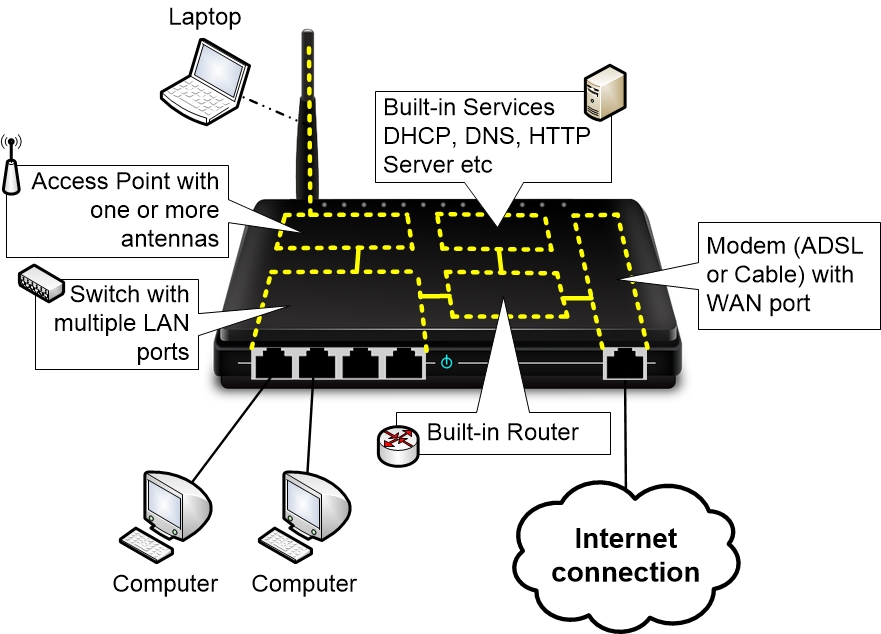A typical home network consists of a few devices where some devices have a more central role than others. Almost all home networks have a router as their central device. It is the router that connects to the Internet connection and then shares that connection to one or more computers on the local network.

A home router typically has got an “outside” and an “inside”
- The outside is the Internet connection, which connects to a port on the router which is often called the WAN port
- The inside is the local network or LAN. A router often has multiple ports that belong to the inside where you can connect different home computers, printers and other devices
Many routers also have a built-in Wireless network. The Wireless network also belongs to the inside LAN of the router.
| WAN means Wide Area Network, or a network connection that stretches out over a wider geographical area, such as an internet connection between a home and the Internet Service Provider (ISP) LAN stands for Local Area Network, a network with limited coverage area, such as a network within a home or a single company, often with a single owner for the whole LAN network |
A closer look at the Home Router
Most people simply call their Home Router a router for short, but the term “router” can be a bit misleading, technically speaking. A Home Router actually consists of many different components which have been combined into a single box. The router functionality is just one of those components.
Today most Home Routers that are sold have built-in Wi-Fi access points. Manufacturers often refer to these products as Wi-Fi Routers.
Throughout this guide we will walk through the many components in a typical Home Router. The information has been spread out over several sections of the guide. But the sooner you learn about what a “Home Router” actually is and how it works the better.
Components in a Home Router
These are the main components of a typical Home Router:
- An integrated Switch with a number of LAN ports. The LAN ports let you connect computers and other devices using network cables
- A Wireless Access Point with one or more antennas which wireless devices can connect to. The antennas can either be visible external antennas, or they can be integrated inside of the home router.
- Often there is a built-in Modem, at least if the Home Router is meant to be connected to Cable or DSL-based Internet connections.
- The WAN port of the router lets you connect your internet connection to the home router. If the home router has a modem, then the WAN port is connected to the internal modem.
- The actual Router function which forwards traffic between the inside and outside networks.
- A Server that handles additional Services (features):
- Handing out IP addresses to devices on your home network
- Handles Address Translations and Port Forwards
- Takes care of any firewall rules
- Replies to DNS-queries
- Includes a Web interface that you can connect to via your web browser to configure the Home Router

Home Router components and network traffic
The internal Router only has be involved if the Network traffic is going to the internet, or if the computers need to talk with one of the Services that are running on the Home Router.
Each of the internal components will be discussed in more details later on in the guide.
|
Previous part: |
Next part: |
